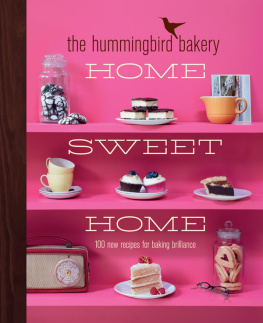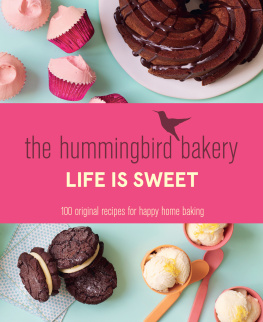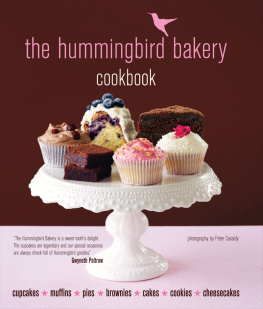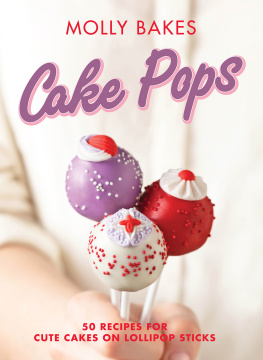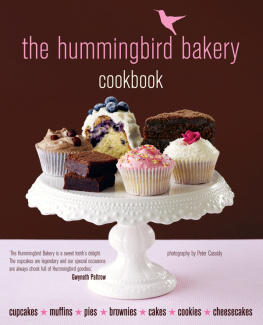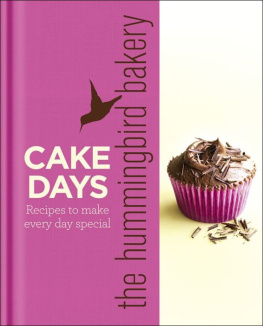Contents
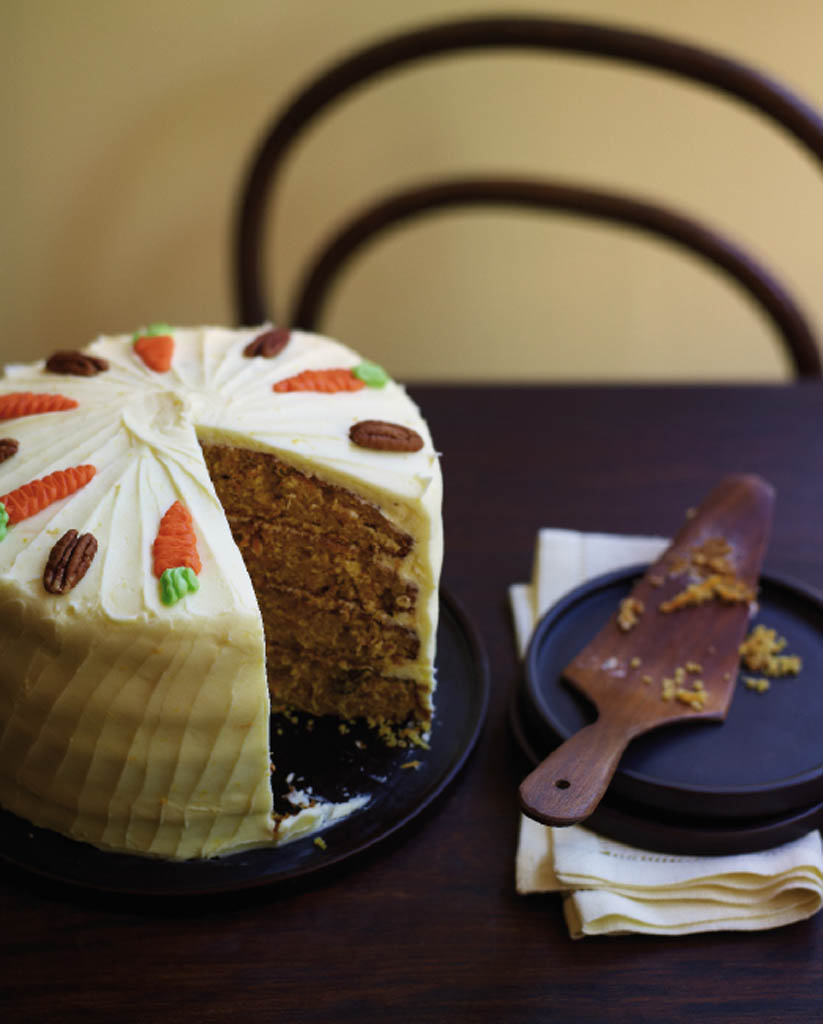
CARROT AND GINGER CAKE
A zingy variation on our Carrot Cake, we love the four-layer presence of this scrumptious cake. Its perfect for a family gathering over Easter. We pipe on the little carrots with orange and green frosting.
Serves 1416
FOR THE SPONGE
450g (1lb) peeled and finely grated carrots
2 tbsp peeled and grated root ginger
80ml (3fl oz) buttermilk
3 large eggs
1 tsp vanilla essence
350ml (12fl oz) vegetable oil
420g (15oz) caster sugar
500g (1lb 2oz) plain flour
2 tsp baking powder
1 tsp bicarbonate of soda
1 tsp salt
1 tsp ground cinnamon
1 tsp ground ginger
80g (3oz) pecans , roasted and chopped
FOR THE FROSTING
100g (3oz) unsalted butter, softened
600g (1lb 5oz) icing sugar
1 tbsp finely grated orange zest, plus extra to decorate (optional)
250g (9oz) full-fat cream cheese Orange and green food colouring and pecan halves, to decorate (optional)
Four 20cm (8in) diameter
loose-bottomed sandwich tins
Preheat the oven to 170C (325F), Gas mark 3, and line the sandwich tins with baking parchment.
Using a hand-held electric whisk or a freestanding electric mixer with the paddle attachment, mix together the carrots, root ginger, buttermilk, eggs, vanilla essence, vegetable oil and sugar until all the ingredients are well combined.
Sift together the flour, baking powder, bicarbonate of soda, salt and ground spices, then slowly beat these into the egg and carrot mixture, adding the dry ingredients in three batches. Mix well after each addition, scraping down the sides of the bowl to pick up any ingredients that may have got stuck there. Stir in the chopped pecans and mix the cake batter until it is smooth and even.
Divide the batter between the four prepared sandwich tins and bake for approximately 30 minutes or until the top of each sponge bounces back when lightly pressed. Allow the cakes to cool completely, on a wire rack, while you make the frosting.
Using the electric whisk or freestanding mixer with the paddle attachment, mix together the butter and icing sugar on a low speed until combined but still powdery in consistency. Add the orange zest and cream cheese, increase the speed to medium-to-high and mix well until the frosting is smooth, light and fluffy.
If you want to decorate the cake like the photograph, set aside a small amount of the frosting in two separate bowls and colour with a few drops of orange and green food colouring.
When the sponges feel cold to the touch, spread some of the uncoloured frosting between each layer and sandwich all four together. Use the remaining plain frosting to cover the top and outside of the assembled cake, then decorate with your choice of piped coloured frosting, pecans or grated orange zest.
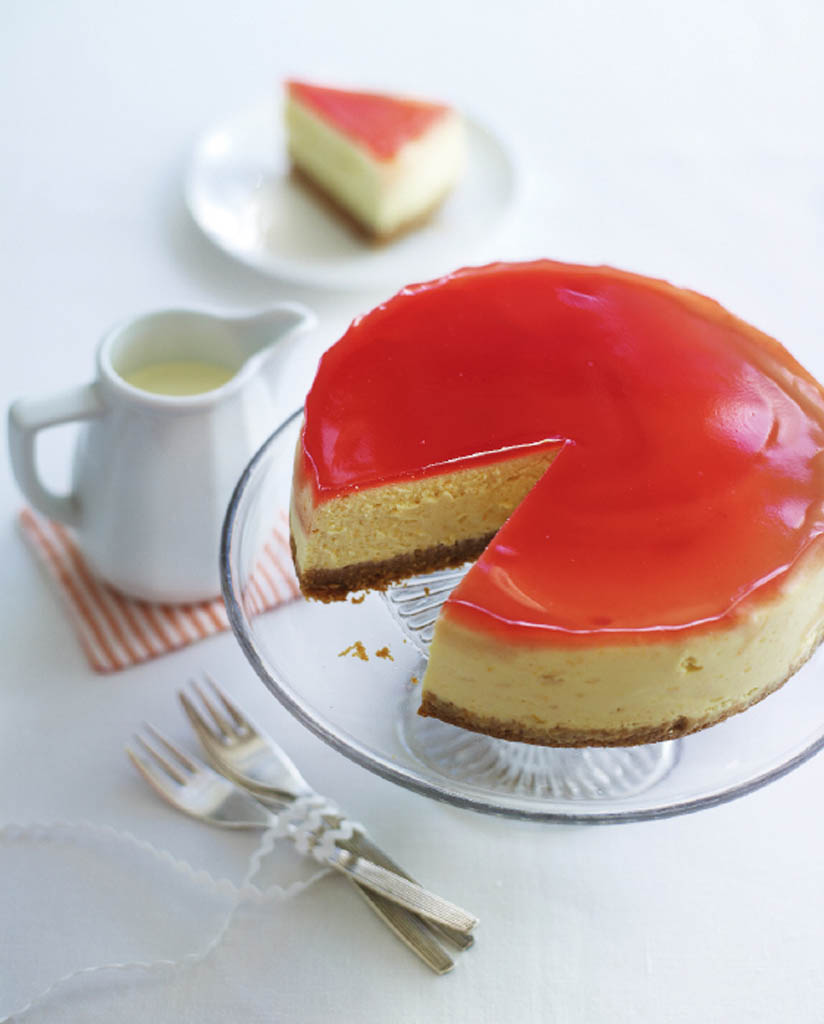
BLOOD ORANGE CHEESECAKE
Blood oranges are in season around Easter. Besides having a distinctive red flesh, they also have a more delicate, tangy flavour than normal oranges, which is essential for this amazing cheesecake.
Serves 812
FOR THE BISCUIT BASE
220g (8oz) digestive biscuits
100g (3oz) unsalted butter, melted
tsp finely grated blood orange zest
FOR THE CHEESECAKE TOPPING
700g (1lb) full-fat cream cheese (such as Philadelphia)
100g (3oz) ricotta cheese
120g (4oz) caster sugar
2 tbsp finely grated blood orange zest
3 large eggs
FOR THE ORANGE JELLY
100ml (3fl oz) blood orange juice, strained
2 leaves of gelatine
One 20cm (8in) diameter
spring-form cake tin
First line the base of the cake tin with baking parchment. In a food processor with the blade attachment, blitz the digestive biscuits into fine crumbs. Alternatively, place the biscuits in a plastic bag, seal it closed and crush with a rolling pin.
Pour the biscuit crumbs into a bowl, add the melted butter and orange zest and mix together with a spoon. Tip the mixture into the prepared tin, pressing it into the base with the back of the spoon, and leave in the fridge for 2030 minutes to cool and set.
Meanwhile, preheat the oven to 160C (320F), Gas mark 3, and make the cheesecake topping.
Using a freestanding electric mixer with the paddle attachment, or a hand-held electric whisk, beat together the cream cheese, ricotta, sugar and orange zest until smooth. Add the eggs one at a time, mixing thoroughly after each addition and scraping down the sides of the bowl to incorporate every last bit of the mixture.
Pour the cheesecake on to the chilled biscuit base and place in a Fill this with water so that it comes to about 5mm (in) from the top of the cake tin, creating a water bath (or bain marie) for the cheesecake to bake in so that it doesn't dry out.
Bake in the oven for approximately 40 minutes or until the cheesecake is a light golden colour, especially around the edges, and firm to the touch, with only a slight wobble in the middle. Allow the cheesecake to cool down to room temperature while still in the tin, and then place in the fridge to set for a few hours, or preferably overnight.
An hour or so before serving, make the orange jelly to go on top of the cheesecake. In a small saucepan, gently heat the orange juice and then remove from the hob. Soften the gelatine leaves in a bowl of cold water, then drain and dissolve the softened gelatine in the warm orange juice.
Allow the jelly to cool slightly before pouring over the cheesecake, then place in the fridge to set for approximately 1 hour. Carefully remove from the tin before serving.
TIP
To prevent any water leaking into the cheesecake while it is baking, place the filled cake tin on a large piece of foil and fold it up around the sides of the tin. Then place the cake tin in the roasting tin and fill with water as above.
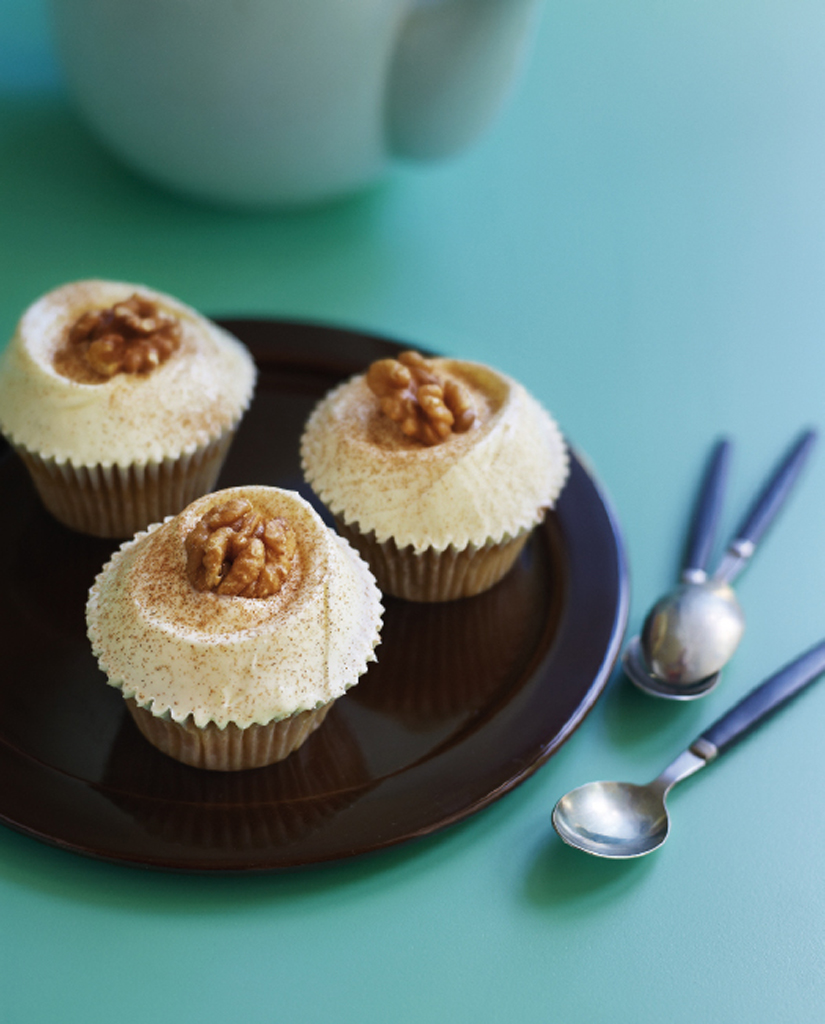
APPLE AND WALNUT CUPCAKES
The apples in these cupcakes make the sponge really moist and flavoursome. Decorate with your preference of walnut halves or chopped walnuts.
Makes 1216 cupcakes
FOR THE SPONGE
80g (3oz) unsalted butter, softened
280g (10oz) caster sugar
240g (8oz) plain flour
1 tbsp baking powder
tsp salt
1 tsp ground cinnamon
240ml (8fl oz) whole milk
2 large eggs
2 Granny Smith apples
50g (1oz) walnuts, chopped
FOR THE FROSTING
600g (1lb 5oz) icing sugar
100g (3oz) unsalted butter, softened
250g (9oz) full fat cream cheese (such as Philadelphia)
Ground cinnamon, for dusting
1216 walnut halves, to decorate
One or two 12-hole
deep muffin tins
Preheat the oven to 190C (375F), Gas mark 5, and line a muffin tin with muffin cases.
Using a hand-held electric whisk or a freestanding electric mixer with the paddle attachment, beat together the butter, sugar, flour, baking powder, salt and cinnamon on a low speed until the consistency of fine breadcrumbs.
Place the milk in a jug with the eggs and whisk by hand until combined, then pour three-quarters of the milk mixture into the dry ingredients and mix on a low speed to combine. Increase the speed to medium and keep beating until smooth and thick, adding the scrapings from the sides of the bowl, then pour in the remaining milk mixture and continue to mix on a medium speed until all the ingredients are incorporated and the batter is smooth.


